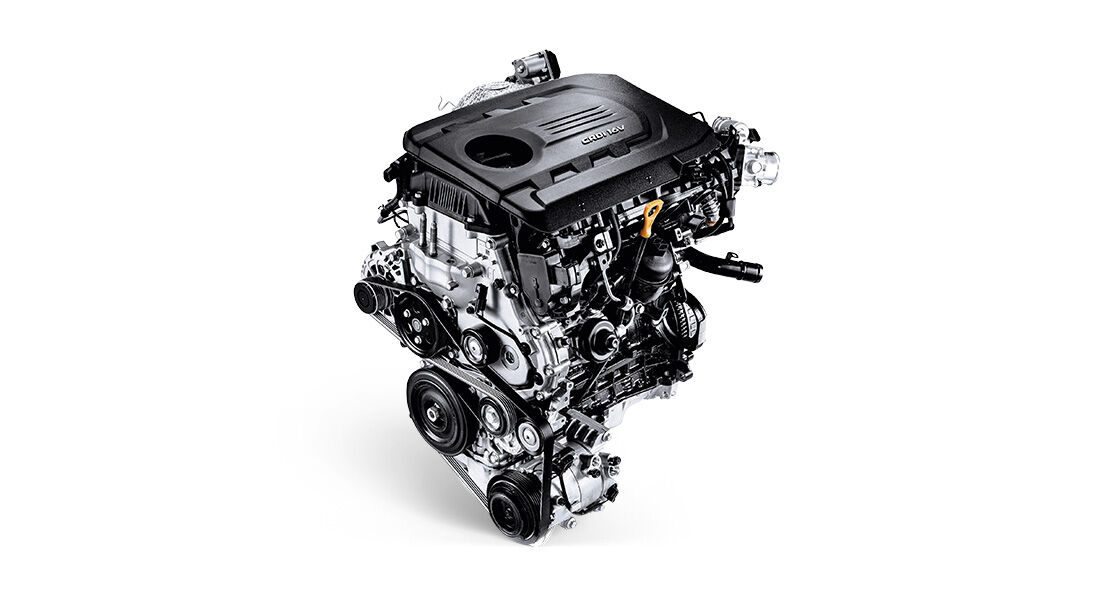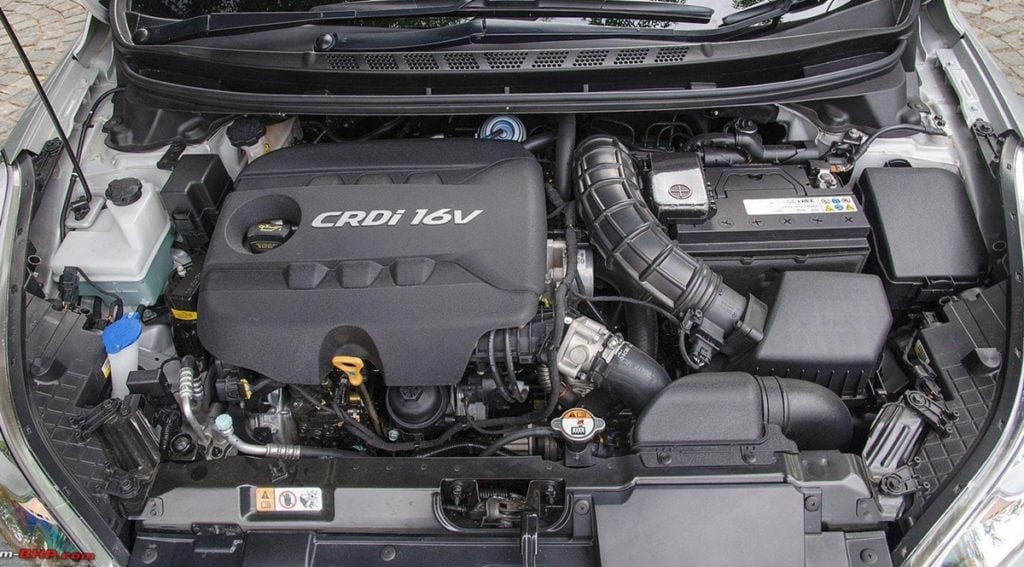The Hyundai 1.6 CRDi Diesel Engine: What You Need to Know
The Hyundai 1.6 CRDi diesel engine has become a mainstay in the automotive world, powering a wide range of Hyundai and Kia vehicles globally. Known for its balance of fuel efficiency and performance, this engine has earned a reputation for being a reliable and cost-effective option. If you’re considering buying a car equipped with a 1.6 CRDi, or if you already own one, this comprehensive guide will provide you with everything you need to know about this popular engine.
This article covers:
- Performance and specifications
- Fuel efficiency
- Common issues and maintenance
- Pros and cons
- And much more!
Let’s dive in!
What is the Hyundai 1.6 CRDi Diesel Engine?
The “CRDi” in the name stands for Common Rail Direct Injection, a fuel delivery system that allows for precise fuel metering and improved combustion efficiency. This technology is a core component of the engine’s ability to deliver good fuel economy and relatively low emissions.
The 1.6 CRDi is a four-cylinder, inline diesel engine, typically found in various Hyundai and Kia models. It’s been produced in several iterations over the years, with improvements and refinements made to enhance its performance, efficiency, and emissions compliance.
Key Specifications and Performance
The specific performance figures of the 1.6 CRDi can vary depending on the model year, vehicle, and the specific tuning of the engine. However, here’s a general overview:
- Engine Type: 4-cylinder, inline, diesel
- Displacement: 1.6 liters (1582cc)
- Fuel System: Common Rail Direct Injection (CRDi)
- Power Output: Typically ranges from 115 to 136 horsepower (bhp), depending on the version and tuning. Some newer iterations can offer slightly more.
- Torque: Generally between 260 to 320 Nm (Newton-meters) of torque, providing good low-end pulling power.
- Transmission: Often paired with a 6-speed manual or automatic transmission, depending on the vehicle.
- Turbocharger: Most versions are equipped with a turbocharger, significantly boosting power and torque.
Fuel Efficiency: A Major Selling Point
One of the primary reasons for the 1.6 CRDi’s popularity is its excellent fuel economy. Diesel engines, in general, are known for their efficiency, and the 1.6 CRDi is no exception.
- Fuel Consumption: Typically delivers impressive fuel economy, often exceeding 50 mpg (miles per gallon) on the highway and around 40 mpg in combined city/highway driving. Actual figures will vary depending on driving style, road conditions, and the vehicle’s weight.
- Emissions: While diesel engines have faced scrutiny regarding emissions, the 1.6 CRDi has been designed to meet various emissions standards, including Euro 5 and Euro 6, depending on the model year. It incorporates technologies like diesel particulate filters (DPFs) to reduce harmful emissions.
Common Issues and Maintenance Considerations
While generally reliable, like any engine, the 1.6 CRDi can experience certain issues. Proper maintenance is crucial for ensuring its longevity and performance.
- Diesel Particulate Filter (DPF) Clogging: DPFs are designed to trap soot particles. Over time, they can become clogged, leading to reduced performance and potentially requiring replacement. Regular highway driving helps to regenerate the DPF (burn off the accumulated soot).
- Fuel Injector Problems: Fuel injectors can sometimes become clogged or fail, affecting fuel delivery and engine performance.
- Turbocharger Failure: Turbochargers are subject to wear and tear. Proper maintenance, including regular oil changes with the correct grade of oil, is essential to prevent turbocharger failure.
- Timing Belt Replacement: Most 1.6 CRDi engines use a timing belt, which needs to be replaced at recommended intervals (typically every 50,000-70,000 miles or as specified by the manufacturer) to prevent catastrophic engine damage.
- Regular Servicing: Adhering to the manufacturer’s recommended service schedule, including oil changes, filter replacements, and other routine maintenance, is vital for the engine’s health.
Pros and Cons of the Hyundai 1.6 CRDi
Here’s a balanced look at the advantages and disadvantages of the Hyundai 1.6 CRDi:
Pros:
- Excellent Fuel Economy: Provides impressive miles per gallon, saving you money on fuel costs.
- Good Performance: Offers sufficient power and torque for everyday driving.
- Relatively Reliable: Generally a dependable engine with a good track record.
- Widely Available: Found in numerous Hyundai and Kia models, increasing the availability of parts and service.
- Cost-Effective: Can be a more affordable option compared to larger gasoline engines.
Cons:
- Potential for DPF Issues: The DPF can require maintenance and eventual replacement.
- Higher Maintenance Costs (Compared to Gasoline): Diesel engines can sometimes require more specialized maintenance.
- Noisier than Gasoline Engines: Diesel engines tend to be slightly louder than their gasoline counterparts.
- Emissions Concerns: Diesel engines have historically faced stricter emissions regulations.
- May not suit Short Trips: Frequent short trips can hinder DPF regeneration and lead to clogging.
Which Hyundai and Kia Models Use the 1.6 CRDi?
The 1.6 CRDi engine has been used in a wide array of Hyundai and Kia models. Some popular examples include:
- Hyundai: i30, i40, Tucson, Elantra, Kona (depending on market and specific version)
- Kia: Ceed, Sportage, Optima, Soul, Stonic (depending on market and specific version)
Always double-check the specifications and engine options for the specific model year and trim level you are considering.
Conclusion: Is the Hyundai 1.6 CRDi Right for You?
The Hyundai 1.6 CRDi diesel engine is a solid choice for drivers seeking excellent fuel economy, reasonable performance, and overall reliability. It’s a practical option for those who frequently travel longer distances or prioritize fuel efficiency. However, potential buyers should be aware of the potential for DPF issues and the need for regular maintenance. By understanding the pros and cons and considering your individual driving needs, you can determine if the 1.6 CRDi is the right engine for your next vehicle.
Frequently Asked Questions (FAQs)
1. How often should I change the oil in my 1.6 CRDi?
The oil change interval typically varies depending on the vehicle and driving conditions, but it’s generally recommended to change the oil and filter every 10,000 to 15,000 miles, or as specified in your owner’s manual. Use the recommended oil grade and viscosity for optimal engine performance.
2. What are the signs of a clogged DPF?
Signs of a clogged DPF can include reduced engine power, increased fuel consumption, black smoke from the exhaust, and the illumination of the DPF warning light on the dashboard.
3. How can I prevent DPF issues?
Regular highway driving allows the DPF to regenerate naturally. Avoid frequent short trips, and ensure the engine reaches operating temperature regularly. Use high-quality fuel and ensure the engine is properly maintained.
4. What type of fuel should I use in my 1.6 CRDi?
Always use the recommended diesel fuel type as specified in your owner’s manual. Using the wrong fuel can damage the engine.
5. How long does a 1.6 CRDi engine typically last?
With proper maintenance and care, a 1.6 CRDi engine can last for many years and hundreds of thousands of miles. The lifespan of the engine depends heavily on how well it is maintained.



